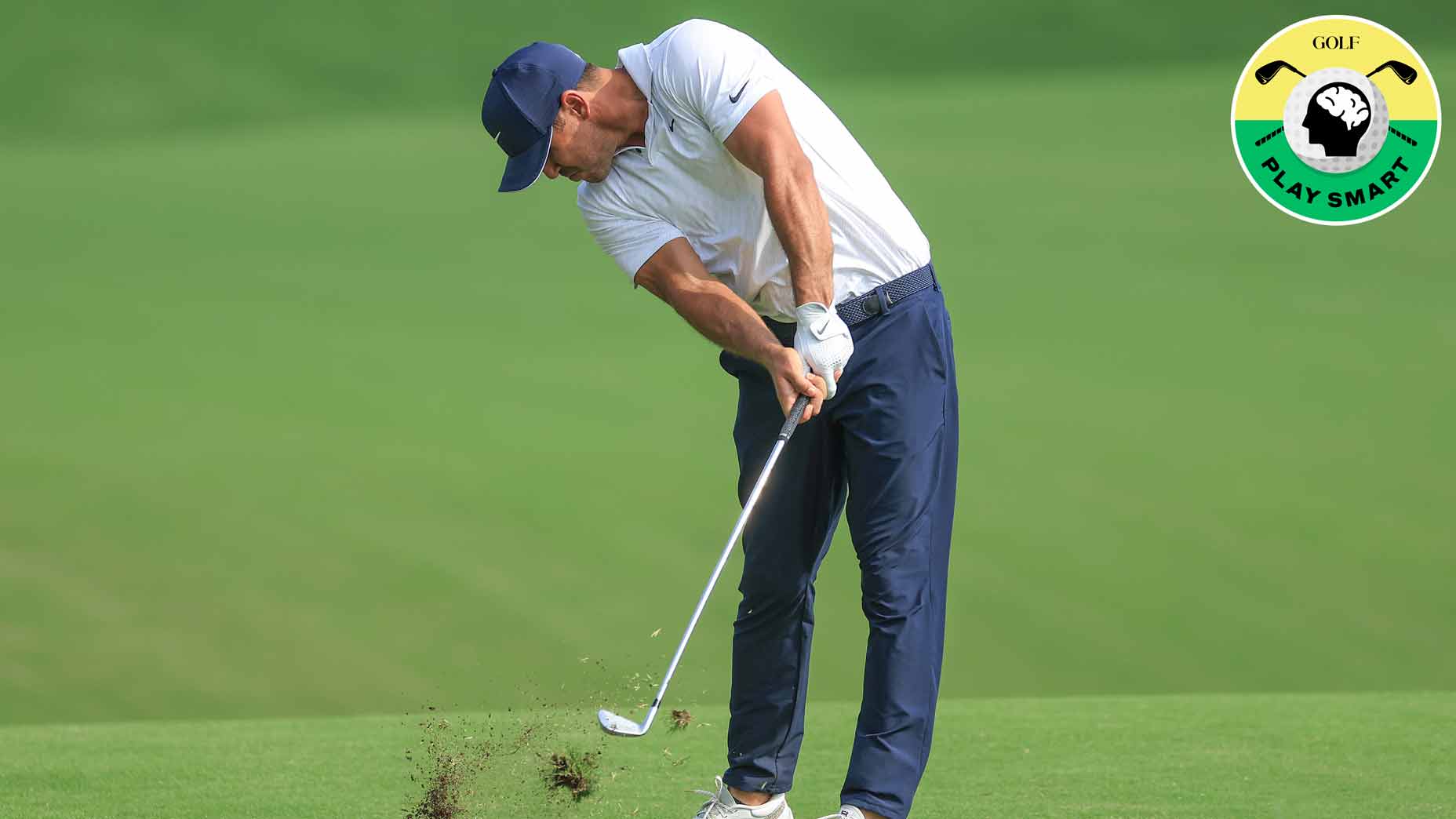
You must compress the ball to hit irons like the pros.
Getty Images
Welcome to Play Smart, a regular GOLF.com game-improvement column that will help you play smarter, better golf.
If you want to hit crisp iron shots, you have to make ball-first contact. When you do this, you compress the ball into the turf, leaving a nice divot in the clubhead’s wake.
The key for making ball-first contact is managing your attack angle and moving the low point of your swing arc in front of the ball. It’s something that’s consistent among all elite ball strikers and something that every golfer should strive for in their own games.
Hitting down on the ball properly isn’t as simple as just chopping down during your swing, though. While it’s true that you want to make ball-first contact, you want to do so in a way that’s efficient and repeatable. For more on that, we turn to GOLF Top 100 Teacher Jonathan Yarwood.
How to make ball-first contact
Managing the low point of your swing is crucial for consistent iron strikes. And the biggest key for that is understanding the “centers” of your body.
While your pelvis and chest will rotate at different rates during the swing, these two components should remain on top of one another throughout the process.
“As you’re winding, there’s a tilt of your body, which keeps those over the top of each other” Yarwood says. “Then there’s a little surf and a shift where they stay over the top of each other.”
Many recreational players make the mistake of sliding their hips toward the target without keeping their chest over the top of them. This throws off the sequencing of the entire operation and makes controlling the low point on a consistent basis difficult.
“The more pressure I can put down by keeping those two things on top of each other, the better,” Yarwood says. “Keep them on top of each other as I shift ahead, and then rotate out of the way.”
If you can keep your torso on top of your hips through impact, it’ll make it much easier to compress your irons and make nice juicy divots like the pros do.
“You do that, you’re going to hit into the ground, you’re going to move the low point forward and get a good attack angle,” he says. “But more importantly, you’re going to push into the ground and generate more speed and more power.”








